Thanks to the Event Fellowship from Open Bioinformatics Foundation (OBF), I was privileged to attend the 2025 International Statistical Genetics Workshop (ISG). ISG is an intensive, week-long workshop held annually in Boulder, Colorado that provides hands-on training in the principles and application of over a dozen open-access bioinformatics tools for analysis of genomic data. This workshop has been running since 1987 and boasts a faculty of world-renowned experts in statistical genetics from around the globe. The curriculum switches annually between family-based and population-based genetic studies. The focus this year was on the theory, performance, and interpretation of genome-wide association studies (GWAS) and their downstream analyses.
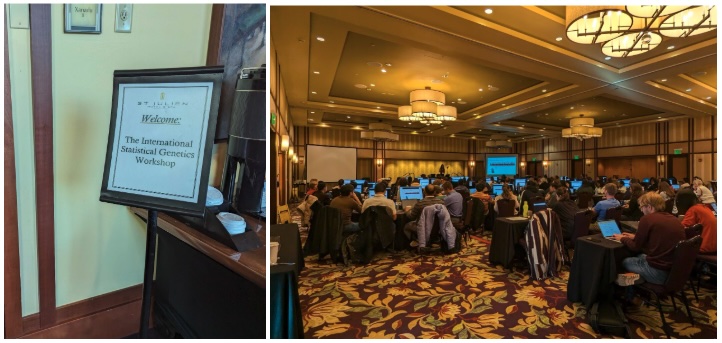 The workshop was a combination of lectures and collaborative hands-on practicals
The workshop was a combination of lectures and collaborative hands-on practicals
The schedule was intensive and jam-packed with learning. Each day we gathered from 8am-5pm for a combination of lectures and hands-on practicals. We covered various aspects of genome-wide association studies, from the theory and principles behind the analyses, to the logistics of running them, to how to perform downstream analyses to investigate biological mechanisms. We learned how to perform analyses on multiple platforms including the terminal, RStudio, and Jupyter. On Monday we learned about classic and modern statistical approaches for genetic modeling; population genetics; how to generate, QC, and impute data using plink; and how to perform principal components analysis using plink and GCTA. Topics on Tuesday included how to access different data, including recruiting participants for your own studies and accessing biobanks; theory and performance of GWAS association tests using SAIGE; meta-analysis of multiple GWAS using METAL; and calculation of polygenic risk scores using SBayesR. Wednesday was a relatively light day, with a only a few sessions which were focused on calculating SNP heritability and genetic correlations with LD score regression. We also had a poster session on Wednesday, during which I presented my work on using the open-access tool PRS-CSx for improving polygenic risk score prediction for severe mental illness in diverse populations.
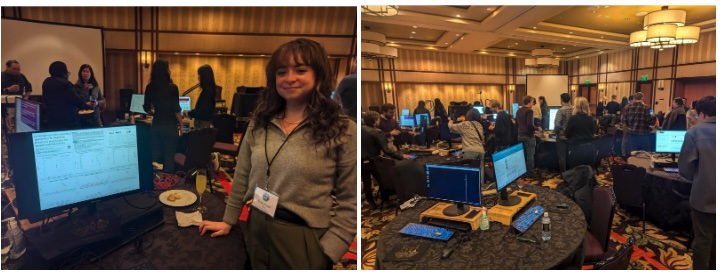 The tabletop poster session - I presented a poster on using the open-source algorithm PRS-CSx
The tabletop poster session - I presented a poster on using the open-source algorithm PRS-CSx
On Thursday we continued with post-GWAS analyses, including additional SNP heritability calculations with GREML; pathway analysis with MAGMA; eQTL analysis with PEER and MatrixEQTL; and fine mapping and colocalization with SUSIE and coloc. Finally, on Friday we went through statistical power and how to calculate it with R and online tools; identifying causal and confounding factors with Mendelian Randomization in R; and performing rare variant analyses using Hail.
A huge benefit of this workshop, besides the technical skills it imparted, was the ability to network with such an experienced and diverse group of people in an intimate setting. We had direct face time with world leaders in the statistical genetics field, who headed off any intimidation we might have felt by reminding us in the very first lecture that we were all colleagues and insisting that we call them by their first names. In addition to being extremely knowledgeable, they were friendly, warm, and happy to answer one-on-one questions and give advice. Meeting and working with the other attendees - many of whom were from across the country or the world - was also fantastic, and was an opportunity I would have never had otherwise. I was even able to meet some of my own collaborators from the PsycheMERGE consortium, who I had only previously met over Zoom, in person for the first time!
When the workshop wasn’t in session, I visited as many places in Boulder as I could. The hotel was located steps from the historic Pearl Street Mall which is home to tons of restaurants and shops. My favorite visits were to the Piece, Love & Chocolate shop for some rich sipping chocolate; BarTaco for some scrumptious tacos, Gemini for some refined and delicious tapas; and The Attic for arcade games and satisfying American food. My favorite eatery was Rosetta Hall, an upscale food hall steps from the hotel with diverse, beautiful culinary options and live music. I also had a delightful visit to the Boulder Bookstore, which had 20,000 square feet of space and three floors containing over 100,000 books of every genre imaginable.
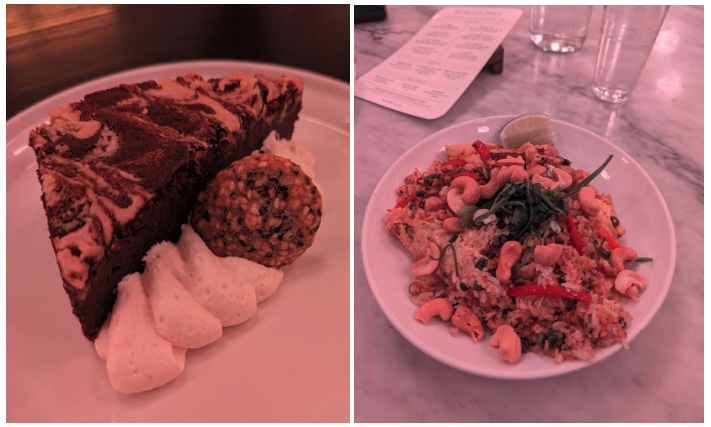 Enjoying some delicious cuisine at Rosetta Hall
Enjoying some delicious cuisine at Rosetta Hall
Perhaps the best part of Boulder was its natural beauty. The hotel was located near the Boulder foothills which contain the famed Flatirons formation. This view was a stunning backdrop that we were able to enjoy during lunch, networking sessions, and on a group hike on Wednesday.
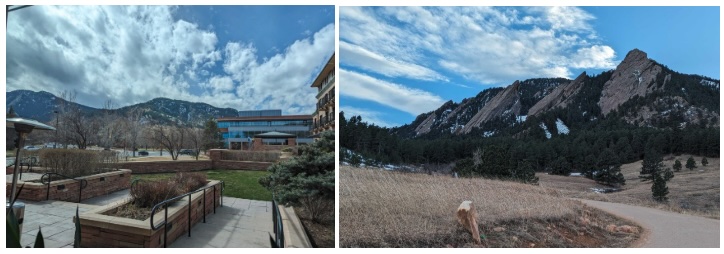 The workshop was a short walk away from the stunning Flatirons and the Open Space park
The workshop was a short walk away from the stunning Flatirons and the Open Space park
I also found some time to take an Uber up into the mountains to visit the incredible Lost Gulch Overlook, which boasts views of the forest and snow-capped peaks of the Continental Divide. The combination of the stunning view, the peaceful silence, and the crisp, cold air was otherworldly.
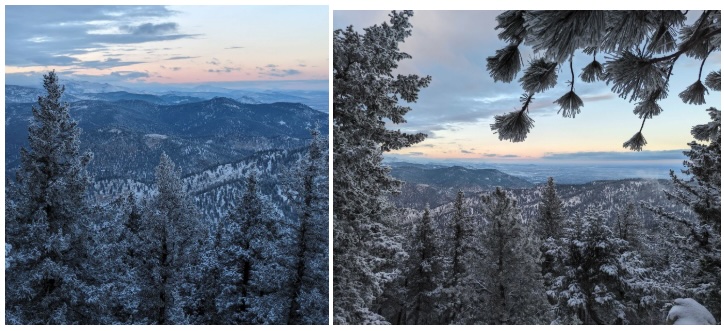 Breaktaking views from the Lost Gulch Overlook
Breaktaking views from the Lost Gulch Overlook
The week was over before I knew it. I left with new connections, the knowledge and confidence to conduct my own GWAS analyses, and the ability to pass on my knowledge to my colleagues. The best part: all of the materials, including the code, from recent ISG workshops are freely available online on ISG’s website! Additionally, the workshop will be virtual next year to help accommodate a wider range of attendees. I highly encourage you to go!
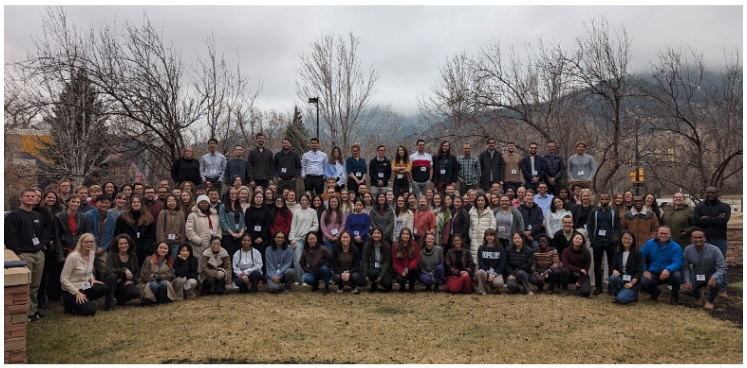 All of the ISG 2025 attendees
All of the ISG 2025 attendees
THANK YOU OBF!!!